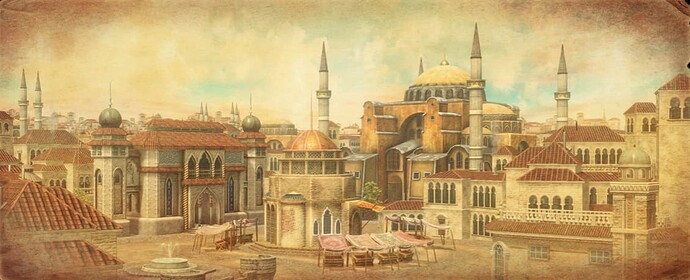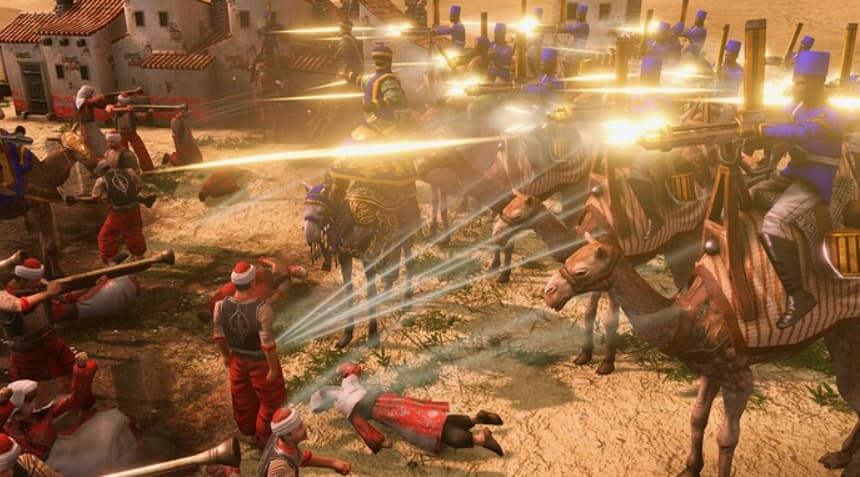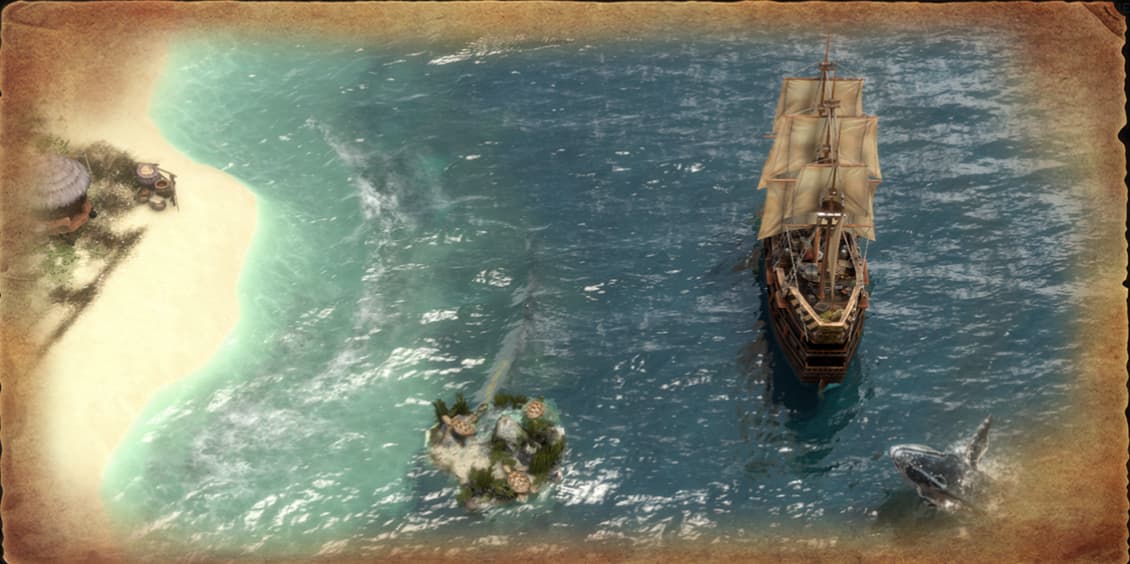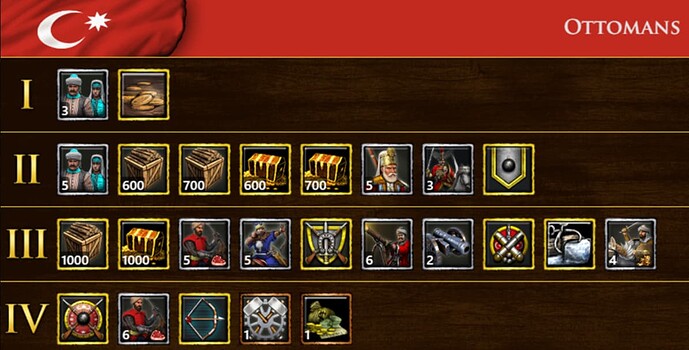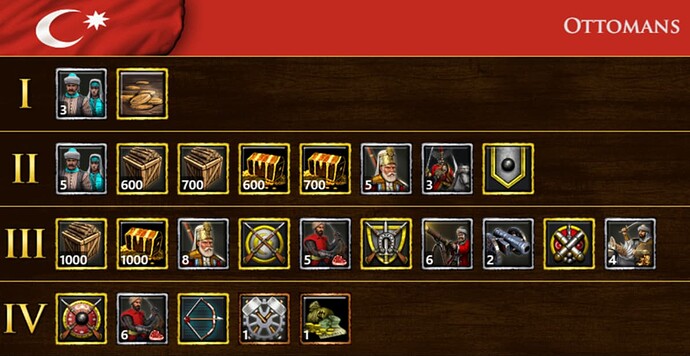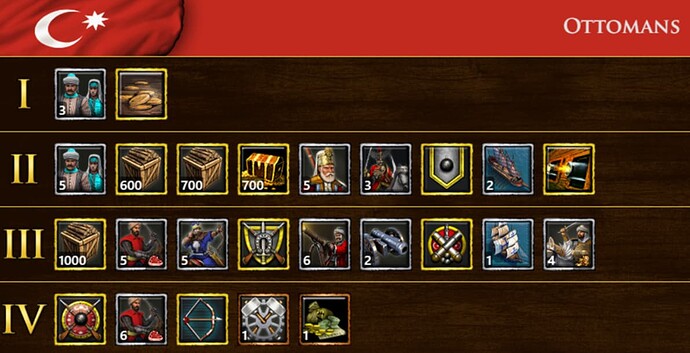
Table of Contents
1 - Overview
2 - Starting Macro
3 - Transitioning to Age 2
4 - Holding a timing push
5 - Water Adaptation
6 - Build Orders
7 - Homecity Decks
8 - Match-Ups
Credits and acknowledgment
This guide has been developed by Revnak and Bronchy to assist the wider community, old and new players in understanding the Ottomans’ new meta and provide valuable insights and tips specific to the civilization. The guide incorporates Revnak’s personal experiences and expertise. We hope this guide proves helpful to you. ![]()
To access the additional content 22 Match-Up suggestions from this guide and read all other guides created by the community, you can join the Aoe3 Community from here. ![]()
Discord Join link
The Ottomans (1299–1923 AD)
The Ottomans are a European civilization with many unique military units and a slow economy in the early- and mid-stages of the game, making them quite reliable on resource shipments for optimal build order timings.
Ottoman settlers (yoruks) are free and train automatically from the town center (at a slower rate than other civilizations). Their settler training rate and population capacity can be improved and increased in the Mosque, a unique building available to this civilization.
Militarily, the Ottomans are considered an artillery-type civilization since they can incorporate cannon-type units in their military composition as early as the Commerce Age. Besides the humbaraci, the Ottomans have access to the Abus Gun, a unique light artillery unit extremely effective against infantry units that substitutes their lack of a trainable light infantry (skirmisher-type) unit. In the later stages of the game, the Ottomans also have the ability of deploying the Great Bombard, a unique heavy artillery unit (with slow movement and fire rate) that can obliterate infantry, ships, and buildings. Moreover, the Ottomans have access to two unique gunpowder type units: the Janissary, a ranged, heavy infantry-type unit, stronger than a regular musketeer, and the Nizam Fusilier, a ranged infantry unit that specializes in using its various formation stances to counter all types of units. The Nizam Fusilier can only be deployed by using homecity cards. Furthermore, the Ottomans have access to the Spahi, a powerful hand-attack, heavy cavalry unit that inflict an area of effect, which can only be deployed by using homecity cards.
On water, the Ottomans, have access to the Galley, a unique type of warship that has a higher movement speed.
The Ottoman Royal Guard units are: the Hussar (Bostanci) and Grenadier (Humbaraci Corps).
Starting Macro
When playing as the Ottomans, it is recommended to prioritize building a trading post during Age 1 as part of your macro strategy. If you are fortunate enough to have more than 30 wood in treasures located near your town center, it is also beneficial to construct a mosque. Additionally, if there are coin treasures available around your town center, consider adding a market to your build order.
In cases where you do not have favorable treasures near your town center, it is advisable to begin by constructing a trading post. Direct your explorer to search for treasures while your villagers focus on gathering food until you have accumulated enough to advance to the next age.
For the Ottomans, food treasures hold the utmost importance as they enable a faster age-up time. Therefore, prioritize locating and collecting food treasures to expedite your progression.
Transitioning to Age 2
When advancing to Age 2, it’s advisable to gather sufficient wood to construct a second trading post and a market. If your plan involves utilizing the Capitalism card in Age 1, aiming for a more unit-focused gameplay in Age 2, you should prioritize the market.
Alternatively, you can build a mosque alongside the market and send the Hunting Dogs upgrade and the 50-wood mosque upgrade. If you have enough wood available, it is recommended to send the second mosque upgrade early in Age 2. Another option is to ship it as part of a 700-wood shipment.
As the Ottomans, it’s generally recommended to prioritize shipping 5 villagers initially, unless you are pursuing a strategy involving trading posts, native alliances, or water-based expansion.
Holding Timing Push
When playing as the Ottomans, the 5 Deli semi-FF strategy can lead to a powerful timing push. However, it’s crucial to adapt to your opponent’s actions. If you notice your opponent initiating a barracks start, it’s important to protect your Deli units and utilize them in conjunction with your minutemen to defend against their push.
In case you encounter pressure, it’s recommended to send 8 Janissaries or 5 Cavalry Archers as a safe response if your opponent employs cavalry units. On the other hand, if the opponent doesn’t push with cavalry, you can simply queue up more Cavalry Archers and consider sending 6 Abus Gunners as reinforcements.
Water Adaptation
The water start strategy as the Ottomans is one of the most powerful approaches you can take in the game.
To begin, build a dock and prioritize collecting wood treasures. Train a minimum of 4-5 fishing boats, considering the amount of income you receive from treasures and the availability of livestock animals to sustain your economy during Age 1. This will greatly enhance your speed in advancing to the next age and establish a robust economy.
With this strategy, you have the flexibility to execute various build orders, such as building a trading post either immediately after reaching Age 2 or at a later stage.
Native Adaptation
In certain maps, you may want to use the Native Settlements to your advantage. Instead of initially shipping 5 villagers, you can choose to ship 700-wood as your first shipment.
This approach allows you to focus on incorporating native units into your gameplay. The Native Treaties card becomes particularly valuable in these situations.

Standard Opening into Adaptation
This build order focuses on a standard play with the goal of transitioning into a semi-FF (Fast Fortress) strategy in Age 3 to obtain Abus Gunners, Cav Archers, and potentially incorporating Delis into your composition. Typically, you would begin with cavalry units, although starting with Jannisaries is also an option. Utilize 5 Delis for raiding, but exercise caution and avoid being overly aggressive, as you will need them to defend against timing pushes. In Age 3, the optimal approach is to initially ship 1,000 wood to facilitate the construction of additional Town Centers (TCs) and bolster your economy. However, this may not always be possible if you are facing a timing push from your opponent. In such cases, adjust your strategy by shipping a unit shipment based on your opponent’s composition. Cav Archers or Abus Gunners are usually the preferred options, although there may be instances where shipping 8 Jannisaries becomes necessary. During the late game, you can form a formidable Age 3 army comprising Cav Archers, Abus Gunners, Mamelukes, and Spahi units. Alternatively, you can choose to advance to the Industrial Age with 3 Spahi units and ship 5 additional Spahi to achieve a powerful 8 Guard Spahi timing push while in the Industrial Age. The suggested build order is as follows: 3 villagers → 5 villagers → 700 coin → 700 wood → 1,000 wood to support TC spamming in Age 3, unless you are facing a timing push, in which case you should adjust and ship a unit shipment that aligns with countering your opponent’s composition. If you are aiming for an Age 4 timing push, ship 1,000 coin and consider including 8 Guard Spahi (3 from Age up and 5 from the Age 3 shipment).
Aggressive Rush Opening
When facing civilizations that tend to age later than usual, such as Ethiopia, Hausa, or British with a Virginia Company start, employing an aggressive rush strategy can be effective. This approach involves utilizing Janissaries and Abus Gunners or Janissaries and Delis to apply early pressure, before adapting to either a Trading Post (TP) boom or Age 3 gameplay. To execute this strategy, begin by shipping 700 wood as your initial shipment. Then, build a Barracks alongside an Artillery Foundry or Stable. Prioritize training Janissaries initially, and once the 700 coin shipment arrives, complete the queue of the other military building. Following the initial rush, you can further strengthen your position by shipping 600 coin, enabling you to maintain unit production and sustain your aggressive gameplay. Additionally, consider shipping 700 food if you wish to continue massing units during the early game. However, in the long run, shipments like 5 villagers become more advantageous, as they provide economic growth, however, a smaller number of units in the early stages. The suggested build order is as follows: 3 villagers → 700 wood → 700 coin → 600 coin or 5 villagers followed by standard build order steps.
Nizam Fast Fortress Push or Fast Industrial Strategy
To execute the Nizam Fast Fortress (FF) strategy with the option to transition into a push or a Fast Industrial (FI) playstyle, follow these steps:
- Begin by building a Trading Post (TP), a House, and a Mosque.
- Age up to the second age (Age 2) using 400 wood, and aim to advance to the third age (Age 3) rapidly. The card order should be as follows: 3 villagers, 700 coin, Mosque card, and research the cheaper Mosque technology.
- During Age 1, prioritize gathering 50 wood for all three buildings, focusing the rest of your villagers on food collection. Once you begin aging to Age 3, shift your villagers’ focus to chopping wood.
- By efficiently executing this strategy, you should be able to train around 20 Nizam units by 7:15 or possibly even earlier, aided by the treasures you collect.
- For the follow-up cards, consider either shipping 2 falconets or 1,000 wood (to establish two additional Town Centers). Ideally, the subsequent card should be 1,000 coin, allowing you to age up to the fourth age (Age 4) and unlock the powerful Great Cannons and train Spahi units.
By following this Nizam FF strategy, you can swiftly advance through the ages, generate a significant military presence, and adapt your gameplay according to your chosen approach—whether it’s executing a push or transitioning into a Fast Industrial strategy.

Deck for Standard Play
Deck for Standard Play with Janissaries in Age 3
Deck with Native Treaties
Deck for Water Play

To access the additional content 22 Match-Up suggestions from this guide and read all other guides, you can join the Aoe3 Community from here. ![]()
Discord Join link
Otto Guide
India Guide
Lakota Guide
Ports Guide
Brits Guide

